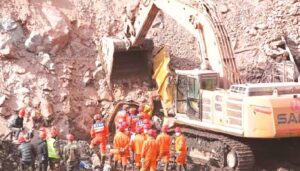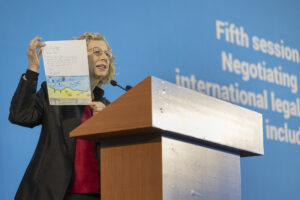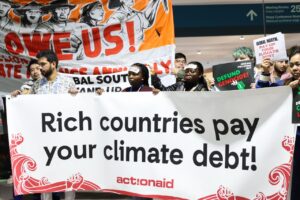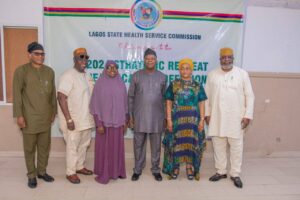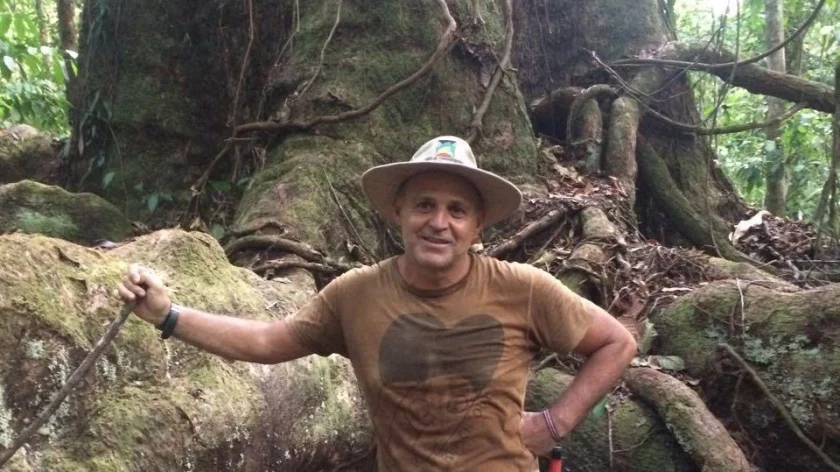
Carlos Manuel Rodríguez
Global Environment Facility CEO Carlos Manuel Rodríguez is a lawyer by training, politician by choice, and conservationist. In an interview, he shared memories from his unconventional career path and offered advice to young people who want to save the planet without working in a laboratory.
Why did you decide to study law?
When I was a kid in the late 1970s and 1980s and I had to choose a career, I had strong sensibilities to nature. I was very interested in biology and natural history, and I had to choose between studying biology and law.
My father was a renowned lawyer, as were others in the family. I remember my father once telling me that you know if I decided to study biology, the most I would do would be to become the head of the zoo in Costa Rica, as opposed to studying law and becoming a lawyer. Law school teaches us about the social contract, about the rules, about how societies organize themselves in private and public law, and eventually with that understanding I can pursue whatever career I love to do, and if I decide to work in farms, work in agriculture, or work on other fields the law is a solid baseline.
In part because of this advice from my father, I decided to study law. Most importantly, I already knew that I liked politics. I’ve got nature and management of natural resources somewhere inside of me.
How did you turn law school into a career in conservation?
While I was in law school, I was a very unconventional law student. I was closer to the guys from the biology school. I spent most of my weekends and vacations in the national parks.
I decided to go to the United States and do some graduate studies on environmental law and environmental policy, which really changed my life.
I came back to Costa Rica at the end of the 1980’s. I was the first environmental lawyer and very quickly I was working together with biologists conservationists foresters, ecologists, and many important conservation organizations in Costa Rica, including the Ministry of Environment, Tropical Science Center, Organization for Tropical Studies, the National Institute of Biodiversity – many of them.
And I developed a career later on in the 1990s focused on working with politicians, working in Congress, and then I was very much engaging in environmental policy and politics.
How do you remember Costa Rica as a child?
When I was probably 12 years old and I began to know the geography of Costa Rica I began to put more attention to what was happening at the landscape level. That was 1972. 1972 was probably the peak of deforestation in Costa Rica. All developing policies, all agricultural, all land use, policies, and laws were stimulating deforestation because you know forest conservation was seen as an unproductive activity. So, all incentives and policies were aimed at putting the land into production and preserving the forests was not perceived as putting the land into production.
So I grew up in the peak of historical deforestation. Some 120,000 hectares every year. As a kid, going around the country with my family, as I was visiting relatives and going on vacation I began knowing the country and I was paying a lot of attention. I remember deforestation big time. I remember the dry season forest fires everywhere in Costa Rica. And I remember as a kid that there were so many trucks with timber on all the Costa Rican roads. It was amazing, as a matter of fact. Two things as a kid I remember very well that showcased the level of deforestation that this country had back then, were the number of trucks with timber and the number of trucks with cattle.
Cattle and timber are part of the same equation. You chop the forest, and you know, you put cows in the landscape, and you know that was the one quick option. It was an immediate option for many people with the aspiration to put land into production. I was watching first-hand the deforestation in Costa Rica. I didn’t understand it as such until many years later when all the data and information were recollected and put together by scientists and conservationists, but that did really have an impact on me. That really had an influence in my choice of career and my choice of profession.
What life lessons has your work taught you?
One thing that I learned through the years is that you don’t need to be a biologist to save nature and save the planet. I think that I myself am a good example of that because I chose a career that has to do more with social sciences than natural sciences, and I was the only guy out there very different from the other conservationists in Costa Rica.
I became an environmental lawyer eventually a politician, and eventually a minister, but that was of course not in my plans. I never expected it, but in a way, I had opportunities because I was not competing with anybody else. I was the only environmental lawyer in my country. I was part of a movement of early environmental lawyers who created environmental law centres In Mexico, Guatemala, Peru, Argentina, Brazil, really in all of Latin America. That was great.
You have held many jobs. Which have you liked most?
I have held quite a few jobs all related to nature conservation, some in the public and private sector, some with civil society. I’ve been minister of environment in the government of Costa Rica three times. But I was also the head of protected areas in Costa Rica between 1995-1998 and I think that was by far the most joyful time of my life.
The 1990s was a decade of high prosperity in terms of sustainability and conservation in Costa Rica.
We created a system of protected areas, we created a lot of NGOs, we created biological corridors, we created the institutions, we created the policies.
We reversed the perverse incentives and the subsidies that were there to promote land use, change and deforestation. And I was part of that movement that made major changes that today makes Costa Rica quite different. Costa Rica in those decades doubled the size of their forest. Well, the economy tripled, the population doubled and went 100 per cent renewable energy. So there is no emission in Costa Rica through the way by which we produce our electricity. There is no deforestation coming from land use, no deforestation coming from land use change, which are the two main sources of carbon emission to the atmosphere.
I was also engaged in a change of paradigms in terms of managing natural resources. Traditionally, natural resources were aimed at managing biodiversity within protected areas – I was one of the first people to talk about landscape management and restoration at the landscape level.
What career advice do you have for today’s young people?
Not long ago, I had my high school reunion meeting. I forgot if it was 40 years after we left high school. And there were all my classmates from high school and I was the only one who dedicated his professional life to public service, and I was the only one who dedicated his life to a not-for-profit activity. In this case nature conservation.
It was very interesting to engage and talk with many of them. To be frank, I felt that many of them were unhappy, even though some of them had money, and I think that many of them would choose a different career if they had another opportunity because they all recognize that our consumption and production system is totally unsustainable and they look at me as the guy who took a lot of risks in his early decisions about his career, in terms of academic and professional options. But also most importantly they look at me as the guy who was very consistent in creating principles and values associated with the protection of nature, based on the fact that nature underpins human well-being and development.

